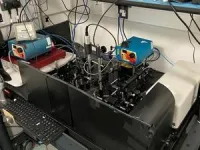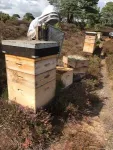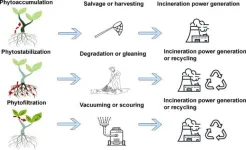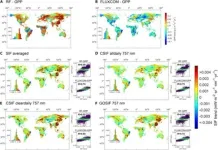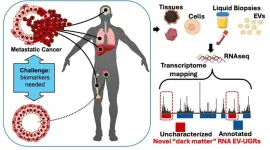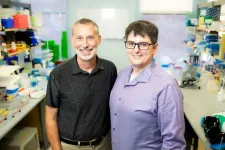(Press-News.org) Previous scientific studies have indicated that North American dog lineages were replaced with European ones between 1492 and the present day. To better understand the timing of this replacement, researchers from the University of Illinois Urbana-Champaign and the University of Iowa sequenced mitochondrial DNA from archaeological dogs. Their findings suggest a complex social history of dogs during the early colonial period.
Europeans and Native Americans valued their dogs as companion animals, using them for similar work and as symbols of identity. Consequently, the dogs reflected the tension between European and Indigenous cultures—the settlers described Indigenous dogs as mongrels to emphasize the perception that Indigenous people did not breed or own their dogs. Indigenous peoples identified European dogs as a direct threat to their existence and took measures to limit the use of European dogs.
“Previous studies had suggested that there were a lot of Indigenous dogs in the continental United States and that they were eradicated,” said Ariane Thomas, a recent PhD graduate of anthropology at the University of Iowa. “We wanted to understand what that entailed: when it happened, were they culled, was it the competition with European dogs, or was it disease?”
The researchers focused on the Jamestown colony in Virginia due to the number of canid remains available at the site and the evidence of Indigenous influence. They worked with Jamestown Rediscovery to identify and analyze 181 canid bones that represented at least 16 individual dogs. Of these, the team selected 22 remains that spanned multiple time points of the early settlement at Jamestown, between 1607 and 1619. They extracted the DNA at the ancient DNA lab in the Core Facilities of the Carl R. Woese Institute for Genomic Biology. The researchers then sequenced the data at the Roy J. Carver Biotechnology Center at Illinois to better understand the ancestry of these dogs.
“This project is a great example of the type of team science that we use at IGB, where people from diverse fields come together to answer questions through the use of complementary skill sets,” said Alida de Flamingh, a postdoctoral researcher in the Malhi (CIS/GSP/IGOH/GNDP) lab.
Based on body size estimates alone, the team discovered that most of the Jamestown dogs weighed between 22-39 lbs, comparable to modern-day beagles or schnauzers. Furthermore, many of the dog bones showed traces of human-inflicted damage, including burning and cut marks.
“The cut marks and other butchery marks we found on them show that some of these dogs were eaten. It implies that when the colonists came over, they didn’t have enough food and they had to rely on the Indigenous dogs in the area,” Thomas said.
Additionally, the DNA sequences demonstrated that at least six of the dogs showed evidence of Indigenous North American ancestry. “Our results show that there were Indigenous dogs in the area and they weren’t immediately eradicated when the Europeans arrived,” Thomas said.
Although the identification of dogs with Indigenous ancestry is not surprising, the results suggest that the colonists and Indigenous tribes may have traded dogs and likely had little concern with possible interbreeding. The researchers are interested in expanding to other sites and obtaining more high-quality DNA samples and reconstructions of dog body size to shed light on whether these dogs had full Indigenous ancestry or whether they were the product of mating with European dogs.
The study “The Dogs of Tsenacomoco: Ancient DNA Reveals the Presence of Local Dogs at Jamestown Colony in the Early Seventeenth Century” was published in American Antiquity and can be found at 10.1017/aaq.2024.25. The work was supported by the National Institutes of Health, the Wenner-Gren Foundation, the University of Illinois Urbana-Champaign, and the University of Iowa.
END
Ancient DNA reveals Indigenous dog lineages found at Jamestown, Virginia
2024-08-16
ELSE PRESS RELEASES FROM THIS DATE:
Researchers make breakthrough in fight against COVID-19
2024-08-16
A team led by Jose Onuchic at Rice University and Paul Whitford at Northeastern University, both researchers at the National Science Foundation Physics Frontiers Center at the Center for Theoretical Biological Physics (CTBP) at Rice, has made a discovery in the fight against severe acute respiratory syndrome coronavirus-2 (SARS-CoV-2), the virus responsible for COVID-19.
The team, in partnership with an experimental effort led by Yale University researchers Walter Mothes and Wenwei Li, has uncovered new insights into how the virus infects human cells and how it can be neutralized. Their findings were published in the ...
Methamphetamine-involved psychiatric hospitalizations have increased, study says
2024-08-16
AURORA, Colo. (August 16, 2024) – A new study, out now in Drug and Alcohol Dependence, that details trends among psychiatric hospitalizations between 2015-2019 finds that while most hospitalizations did not involve any substances, methamphetamine-related hospitalizations have increased while overall number of psychiatric hospitalizations remained stable.
Additionally, researchers detail that psychiatric hospitalizations caused by methamphetamine use were highest in the Mountain West region but were also shifting geographically. “Rates of ...
Green warriors: plants on the frontline against microplastics
2024-08-16
In an innovative ecological article, researchers have unveiled the potential of phytoremediation to curb microplastic pollution. This approach leverages natural plant processes to absorb and diminish micro and nanoplastics, offering a viable solution for managing environmental plastic pollution. This viewpoint advocates utilizing plant life as an effective tool against the widespread issue of plastic contamination in ecosystems.
With escalating concerns about the enduring impact of plastic waste, phytoremediation emerges as a promising solution. This method utilizes plants ...
Decoding mysterious seismic signals
2024-08-16
For the decades since their discovery, seismic signals known as PKP precursors have challenged scientists. Regions of Earth’s lower mantle scatter incoming seismic waves, which return to the surface as PKP waves at differing speeds.
The origin the precursor signals, which arrive ahead of the main seismic waves that travel through Earth’s core, has remained unclear, but research led by University of Utah geophysicists sheds new light on this mysterious seismic energy.
PKP precursors appear to propagate from places deep below North America and the western Pacific and possibly bear an association with “ultra-low velocity zones,” thin layers ...
Green light for accurate vegetation research: new evaluation of global SIF datasets
2024-08-16
A recent study has pinpointed the top-performing solar-induced chlorophyll fluorescence (SIF) products for precise global monitoring of photosynthesis and vegetation dynamics. By thoroughly evaluating eight widely-used SIF datasets, the research team identified Global OCO-2 SIF (GOSIF) and Contiguous Solar-Induced Fluorescence (CSIF) as leading tools for estimating gross primary productivity (GPP) and forecasting key phenological stages. These findings provide crucial direction for scientists aiming to enhance global vegetation ...
Mount Sinai researchers discover novel nanoparticles in blood with potential to transform cancer diagnosis
2024-08-16
New York, NY [August 16, 2024]—Scientists at the Icahn School of Medicine at Mount Sinai have identified a new class of RNAs packed into tiny particles known as extracellular vesicles (EVs) that could revolutionize how cancer and other diseases are diagnosed. The team found that these molecules undergo changes when cancer is present, suggesting their potential as biomarkers for detecting prostate cancer or as targets for therapy. The work, led by Navneet Dogra, PhD, Edgar Gonzalez-Kozlova, PhD, Tzu-Yi Chen, PhD, ...
Underground event marks excavation completion on colossal caverns for underground neutrino laboratory, DUNE
2024-08-16
Lead, SD (Aug. 15, 2024) — A ribbon-cutting event was held today at the Sanford Underground Research Facility (SURF) in Lead, S.D. to mark the completion of excavation work for the Long-Baseline Neutrino Facility/Deep Underground Neutrino Experiment (LBNF/DUNE), an international project led by the U.S. Department of Energy’s Fermi National Accelerator Laboratory. The “Into the Depths of Discovery” event, hosted by Fermilab and the South Dakota Science and Technology Authority (SDSTA), was attended by supporters of the three-year excavation of the caverns, including state and federal leaders as well as officials from the Department of Energy.
“Today ...
Exposing myths about ballot collection on Native American reservations
2024-08-16
Third-party collection of mail-in ballots has helped rural residents and those with disabilities to vote, yet the practice has become contentious and the target of laws aimed at restricting it.
Critics claim the process is vulnerable to fraud and manipulation.
But new research from the University of Utah’s College of Social & Behavioral Science tells a different story. Ballot collection is more accurately characterized as a pathway for legitimate voter participation, according to a study published last month. Authors Daniel McCool, a professor emeritus in the Department of Political Science, and Weston McCool, a ...
New twist on synthesis technique developed at Rice promises sustainable manufacturing
2024-08-16
James Tour’s lab at Rice University has developed a new method known as flash-within-flash Joule heating (FWF) that could transform the synthesis of high-quality solid-state materials, offering a cleaner, faster and more sustainable manufacturing process. The findings were published in Nature Chemistry on Aug. 8.
Traditionally, synthesizing solid-state materials has been a time-consuming and energy-intensive process, often accompanied by the production of harmful byproducts. But FWF enables gram-scale production of diverse compounds in seconds while reducing energy, water consumption and greenhouse gas emissions by ...
Rare diseases point to connections between metabolism and immunity
2024-08-16
Inherited diseases of metabolism and immunity have more in common than previously recognized, according to a new study published in the journal Science Immunology. The findings point to a new set of metabolic genes that are important for the function of immune system T cells, and they offer insights that could improve care for patients with these disorders.
The study examined genes that cause inborn errors of metabolism (disorders of the processes that cells use to convert food to energy) and inborn errors of immunity (disorders that affect immune system function). These rare and complex diseases are not fully understood.
“There had previously ...

